
Dive in deep in this article, as we discuss the Sailboat Keel
When choosing a sailboat keel, the choice of the right Keel is a crucial factor in how the boat will move through the water. It is one of the three main elements of how the boat handles.
Two other elements are the hull shape and the choice of rigging.
The keel fundamentally affects your movement through the water.
While the boat’s hull displaces the water beneath it and adds lift to allow it to float.
The keel balances the boat from forces acting on the mast and keeps it on course and moving straight ahead.
When choosing the shape and size of the keel for your boat, you need to decide what type of sailing you will be doing and what conditions you are likely to face.
When choosing a sailboat keel, you have to take into account the following:
– Will you be crossing oceans or taking the boat out of the marina on weekend or day trips up the coast?
– Will you be open water cruising or navigating tidal coastal waters and slipways or harbours?
– What sea and weather conditions are you likely to face?
– How many people will be aboard?
– What level of comfort do you need?
Buying any sailboat is a compromise in some way or another. It’s up to you what you are willing to compromise on.
So I hope that this article will help to guide your decision-making well ahead of buying your boat. Take your time and don’t rush the decision.
Let’s dive in!
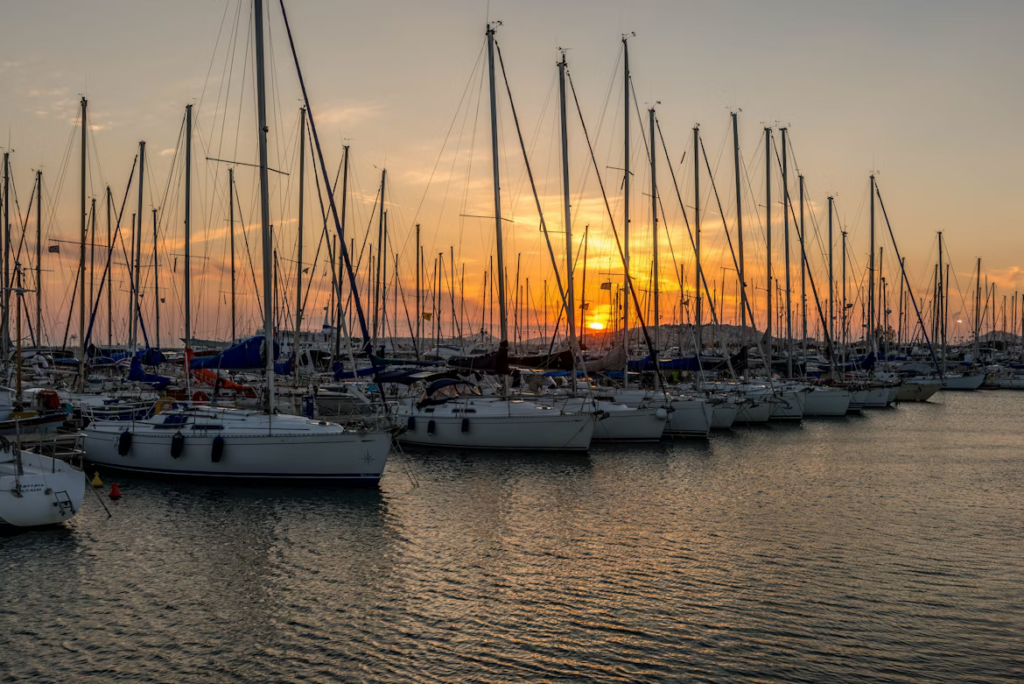
Some Common Factors when considering which sailboat keel to choose:
So before we get into the meat of this topic, let’s take some time to go over common factors that affect the choice of keel for your sailboat.
‘The Keel Counters Heel’:

A sailboat has a displacement hull, which means it is buoyant and floats. But this rounded shape leads to them being able to tip over or roll side to side in the water,.
Imagine standing in a canoe and transitioning weight from your left to your right foot. It starts to rock.
The Sail is applying similar forces to the hull as the wind blows on to it from either port or starboard.
The keel acts as a way to resist this rocking movement, or ‘The Keel Counters Heel’.
Keels are often fitted with iron or lead ballast to help counteract the forces from the mast.
A Quick Note on Canoe Outriggers

So what did we do before we had access to modern boat construction methods and materials?
In the infancy of boat building, a very quick and simple option was to attach an outrigger for stability.
At the time it spared resources, which were scarce on the islands, and the boats remained light enough to be moved either alone or with a handful of people.
To regain the control of the heel in Canoes, the outrigger was attached to help stabilise them.
The addition of a sail has made some very good and seaworthy ocean going vessels.
Much of the oceanic and Polynesian expansion and colonisation was done on such boats.
A great example are the wa’a kaulua from Polynesia.

Leeward Slippage:
As the wind pushes on the sail from the side, the wind wants to push the sailing boat in the same direction as the wind.
This would give a slippage as you are pulled away from your course and move with the wind direction.
A keel helps to keep the boat moving in a straight direction so that you can move through the water against the wind.
Wetted Surface:
The ‘Wetted Surface’ is exactly what it sounds like, it is the total surface area of a boats hull in contact with the water.
The more wetted surface in the water, the more the drag and the more stable the boat.
A full keel has the most wetted surface and is therefore also the most stable and also resists the most slippage, or the wind pushing it off course.
Fin Keel Tip Design
There are many varieties and shapes of keel tip and they all come with their own advantages and disadvantages.
As with any decision with a sailboat it comes down to compromise. What do you want from your boat and where are you going to be sailing it?
For the cruising skipper the main considerations when choosing a keel are good structural strength, reliability, good performance and relative ease of haul-out when the time comes.
“ End Plate Effect ”
We need to quickly discuss the forces at the tip of the keel. There is often a lot of turbulence created at the tip of the keel and this turbulent water leads to drag, as the boat has to pull along and carry this vortices through the water.
A good solution is to add an end plate to the keel and to optimise it to reduce this turbulence and side slippage.
We’ll look briefly at two of the many varieties today, the bulb and the wing keel tips.
The Bulb Keel Tip

This allows a keel to have a lot of the weight of the boats ballast right at the bottom of the keel.
This allows the keel to be narrow and hydrodynamic, meaning that there is less drag on the keel and this allows the boat to move faster through the water.
These keels are usually also not as long and this helps the boat to be able to have a narrower turning radius. This improves manoeuvrability and turning speed.
The ‘Bulb’ moves like a torpedo through the water. This is a very efficient and fast keel design, very popular on racing boats.
Disadvantage: This bulb often leads to the keel being much longer and therefore the draught is deeper on these boats. That is not something you want in shallower waters, or where there are rocks or reef, for example.
The Wing Keel Tip
The wing keel was famously used on Australia II in the 1983 America’s Cup.
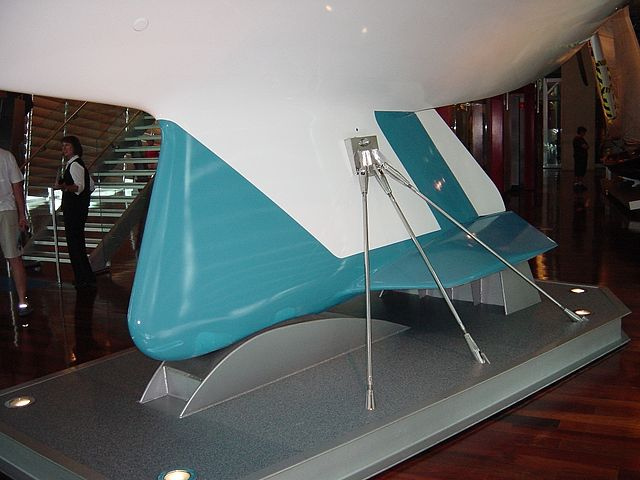
This design allows much more weigh to be added to the bottom of the keel and enables the keel to be shortened to raise the draught of the boat. This shoal draught is very useful in shallower waters and along the coast.
The wing was also designed to help reduce drag by removing some of the vortices that accumulate behind the keel from turbulent water.
Disadvantages:
– There is more wetted surface area under the water to increase drag.
– If you were to manage to run aground into a mud bank, for example, then it would be very difficult to get unstuck.
– The wing would easily catch and hold onto the anchor chain if the boat is moved around by changing tides or winds at anchor.
– It is more challenging to paint and to keep the surface fair under the wing.
– You have to pay close attention when dry docking the boat and putting it on blocks, to protect the wing.

Recap:
– The Keel prevents sideways movement, ‘rocking’. ‘Keel Counters Heel’
– The keel keeps the boats hull moving in a straight line by resisting slippage to the Leeward side.
– There are two main types of keels, Fixed Keels and Moveable Keels
The 3 Main Types of Fixed Sailboat Keel
1. The Full Keel:

Your best bet for crossing oceans and weathering huge storms. The slow and steady motion is best for liveaboard and bluewater cruising.
– Runs usually 50% of the length of the boat
– Often holding upwards of 3 tonnes of ballast
– Popular on Cruisers and for liveaboards, More Stable, Safer, More Comfortable.
Advantages:
– Protects the Rudder and Prop
– Provides most directional stability by resisting side slippage from the wind the most.
– The keel is encapsulated and is fixed permanently to the hull. There is much less chance of damaging it.
Disadvantages:
– Largest wetted surface = Larger Heavier Keel is more stable, less heeling over
– Slowest, due to the most wetted surface and therefore the most drag.
– The directional stability going forwards does tend to make it harder to steer quickly when manoeuvring to the slipway for mooring.
– Difficult to back up under power.
2. The Fin Keel:
Better for Racing and day sailing. If you want to be able to get into the shallower waters by the islands or have to quickly get into a protected anchorage to weather a sudden storm, then these may not be the best choice for you.
Advantages:
– Faster, due to being longer they require less weight to balance the tipping forces from the Mast and sails. They are also narrower and there is less wetted surface to cause drag.
– Better Windward Performance due to a deeper keel
– More manoeuvrable, better for manoeuvring into slips etc.
Disadvantages:
– Usually Bolted on and not integrated. Much more vulnerable, break off easier
– More unstable = more uncomfortable: They ‘Hobby Horse’ more in the waves at anchor, they tend to heel over more
– Small attachment area at hull can lead easily to damage if run aground or a submerged object is hit with enough force.
– Rudder and propeller are unprotected
A note on the Bulb Keel
– These put ballast further down in the keel to give better balance and righting.
A note on the Wing Keel
–The wing keel enables more ballast on a shallower draft.
– The wing can also provide a dimension of lift
– It is important to keep on top of keel bolt inspection and maintenance, although catastrophic keel bolt failures are rare.
3. Bilge Keel / Twin Keel:
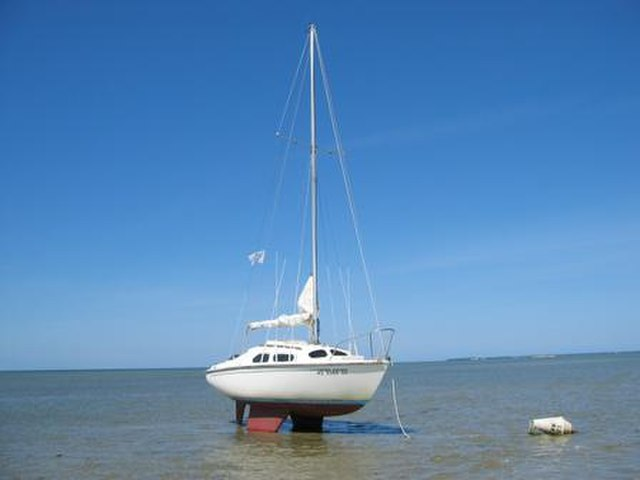
Often used in Tidal Waters for beaching while at mooring.
– Dry storage and maintenance becomes a lot easier
– The ability to ‘beach’ the boat safely on even ground is useful in tidal waters at mooring or when you need to carry out maintenance in the dry.
Disadvantages:
– More unstable and less able to sail close to the wind.
– A central hung rudder would be in danger if you were to run aground or strike a submerged object.
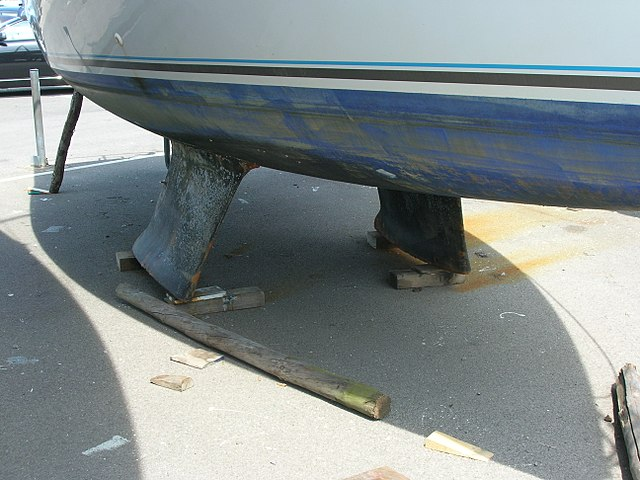
The 3 Main Moveable Sailboat Keel

1. The Lifting sailboat Keel:
This sailboat keel can be lifted to reduce the draught of the boats hull.
– Also Often used in tidal waters for beaching or in shallows. Many sailing dinghies have either a centreboard or a daggerboard.
– Has the advantage of being able to lift the centreboard to reduce drag when on a run with the wind.
– This can also enable you to be able to beach the boat to carry out repairs or to moor in tidal waters
Disadvantage:
– A hole in the hull where the mechanics and daggerboard go compromises the hull integrity.
– More machinery, e.g manual winch, hydraulic pump, etc. to service and potentially to fail at an inopportune time.
– With enough force, hitting a submerged object or running aground can damage the hull and potentially sink the boat.
Dagger Board vs Centre Board:
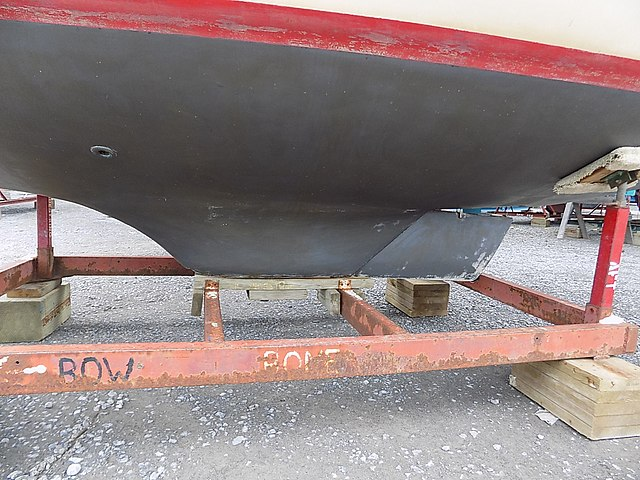
Both examples of a lifting keel, they differ in one main way.
The Centreboard pivots on a pin or a hinge and is raised and lowered in a turning fashion from this hinge.
The Daggerboard is raised and lowered straight up and down through the hull of the boat.
The centre board can also be fitted inside a stub keel
2. Moveable Keels- Leeboards
These are huge keels that are carried on the sides of a ship on pivots, they can be raised and lowered by turning them up and down into the water.
– Usually for heavy cargo carrying vessels in rivers
– Reduce slippage immensely
– They do not increase the draught, so they are good in inland waters.
– Not as able to reduce heel, because of their positioning on the sides of the boat as appendages.

3. Canting Keels / Pivotable Keels
This sailboat keel is best suited for high performance sailing boats.
– Higher Cost
– More complicated and difficult to maintain
– Needs a lot of power to move the hydraulic ram that moves the keel, on racing boats the engine runs constantly for this.
– Highly specialist parts that are hard to come by in remote places.
– The keel has to be separately controlled every time the boat tacks or jibes.
A Quick note on Catamarans:

Catamarans usually have either mini keels (90% of Catamarans have mini keels) or daggerboards and often have stub keels to accommodate them.
The mini keels are a foam filled foil that is fixed beneath the hull to aid in directional stability.
In a collision the keel can sheer off or crack but remain attached without affecting the hull integrity. This is a monumental advantage over the Daggerboard system.
Catamaran Daggerboards:
The Daggerboards are usually only required when going upwind. In light winds the leeward board is down.
In stronger winds both board are down and in very strong winds the daggerboards are both retracted to 50% to reduce the forces on the Daggerboard housing.
In large seas the windward board will be down to stop sideways slippage and the leeward board will be retracted to reduce resistance in case you are hit side-on by a large breaking wave.
** The daggerboard is Vulnerable in the case of hitting something underwater. In case of a Hull breach the catamarans may flood.
There are usually several lockable and air/water tight compartments in Catamaran Hulls, where you can lock of the flooding section.
Centreboard:
A very good option is the Centreboard, which upon hitting a submerged object, simply retracts back into its housing, without affecting the hull integrity.
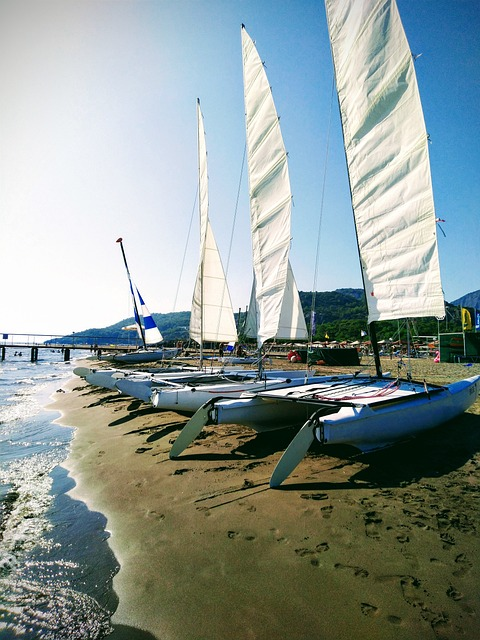
The Cruiser’s Compromise or The Modified Full Keel / Modified Fin Keel
For those of us looking to do a bit of bluewater cruising , a very good compromise to a full keel is a Modified Full Keel. Combine that with a skeg-hung rudder and you have yourself a very seaworthy vessel.
These are very popular today and about 70% of sailboats in the Caribbean will be some variation of the modified fin.
The modified fin can be combined with the bulb and or the wing to shorten the draught and to help further stabilize the boat.
This sailboat keel is like the keel but with a cutaway from the stern.
Benefits:
– Good handling
– Good directional stability
– Less wetted surface are as a full keel = Less drag and is therefore faster in the water.
– Still have the protection to the rudder that the full keel offers, without the added weight.
– Can perform well in all conditions
– Have a comfortable motion
– The full keel offers more room below decks for storage.
– Often have a skeg-hung rudder, with two points of contact it is a stronger form of steering. The rudder is also protected by the keel from damage.
– Not as easy to manoeuvre under power, especially in reverse
Disadvantages:
– Compared to a full sailboat keel, this is not the best at long ocean voyages or a boat for weathering hurricanes.
– They stay true to course with their longer keel, so are harder to manoeuvrer in a marina for example than a fin keel.
– Full keels are slower due to drag on the larger wetted surface.
– Does not point into the wind a well as fin keeled boats
So in summary…

Every boat is a compromise in some way and it’s up to you what you want to compromise on.
It is often said that, “A fin keeled boat is designed to outrun the storm, while a full keeled boat is built to weather it.”
Seamanship is as always key, these boats can also do ocean crossings, but you need to really take into account the conditions and plan accordingly.
Take your time and choose carefully your next sail boat.
I hope that this article has been of interest to you.
Please get in touch with us at info@sailingtt.com.
Until we meet again, fair winds and following seas and remember that “Life Begins Where Land Ends…”
Did you enjoy this post? Then read our article on “How to Identify the 6 Major Sail Boat Rigs”
https://sailingtt.com/6-essential-ways-to-rig-a-sailboat/
Resources:
https://www.pbo.co.uk/boats/keel-types-and-how-they-affect-performance-76621

